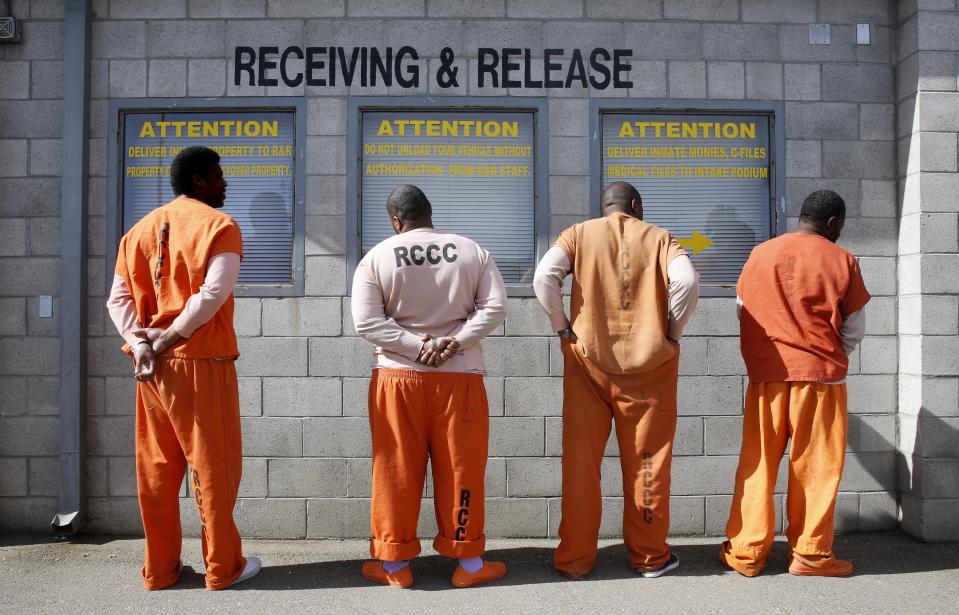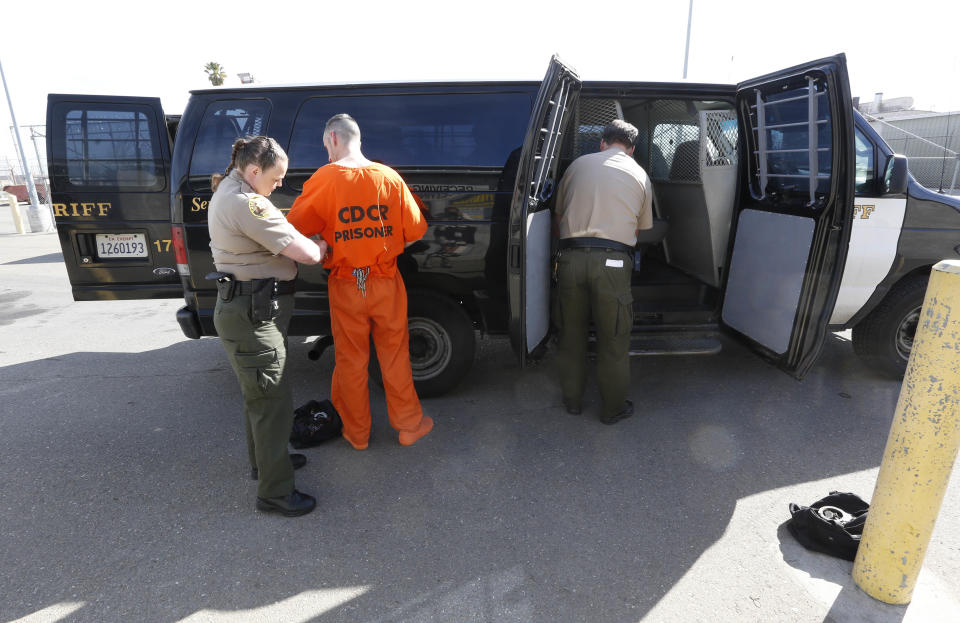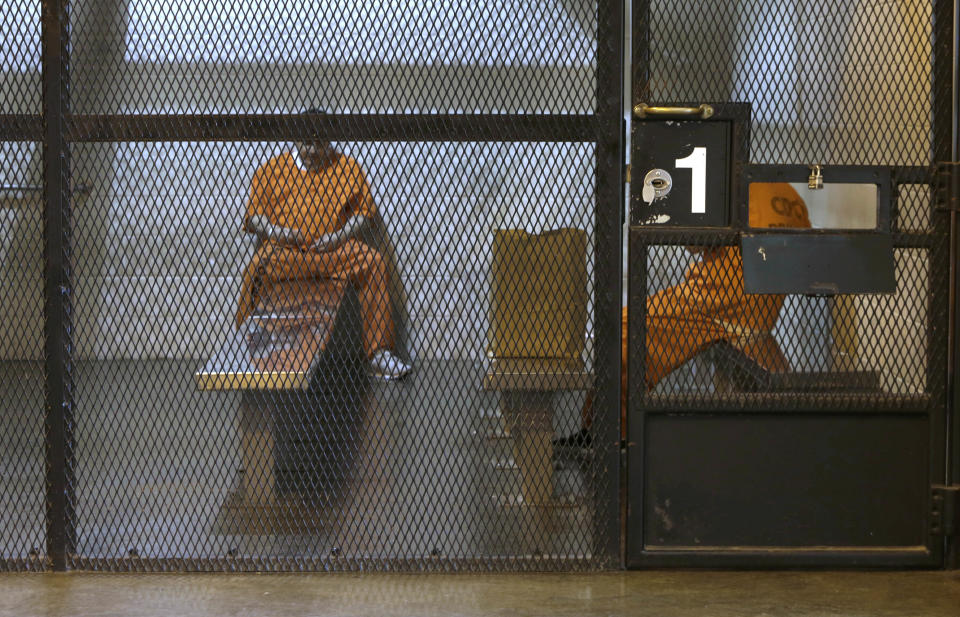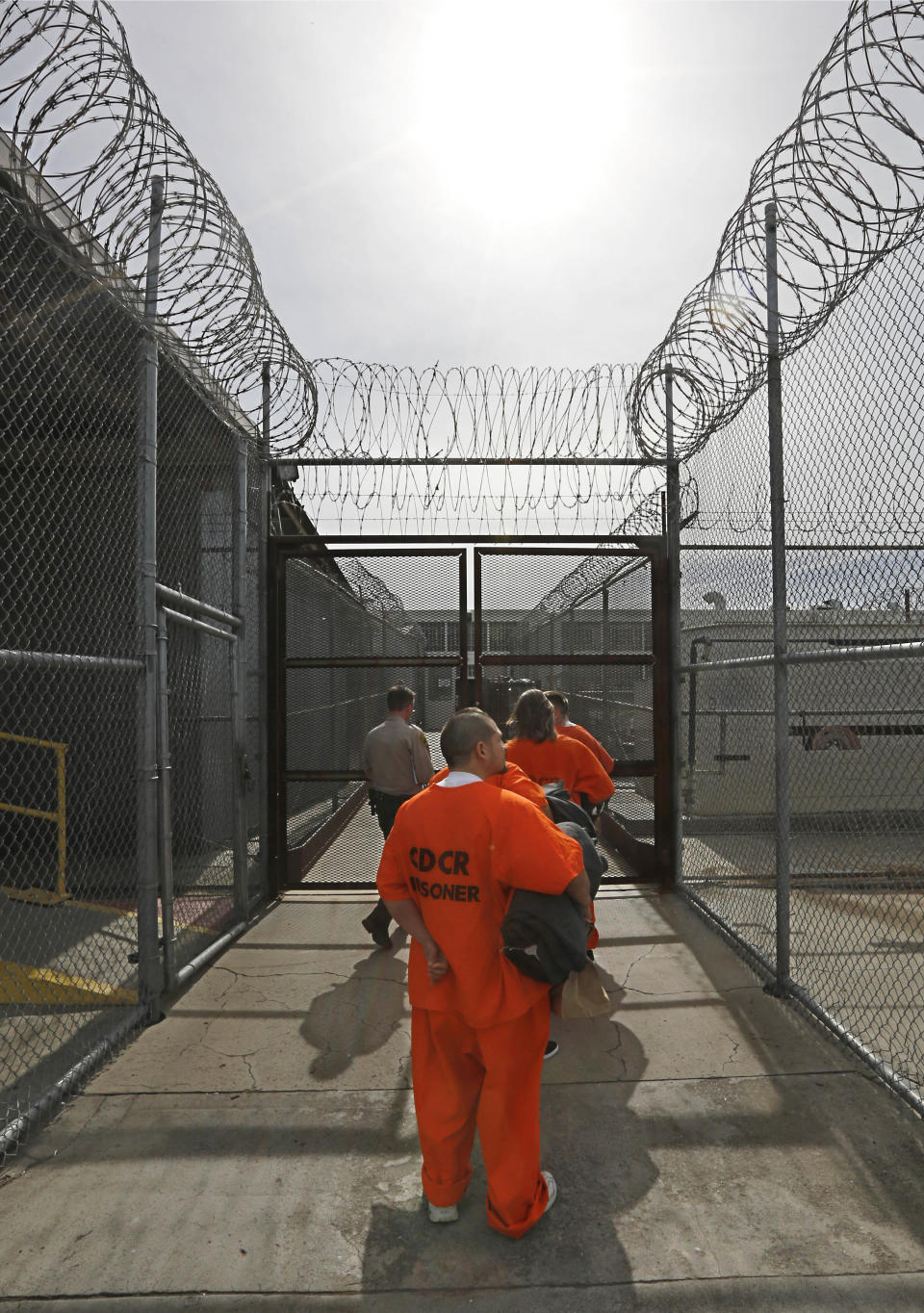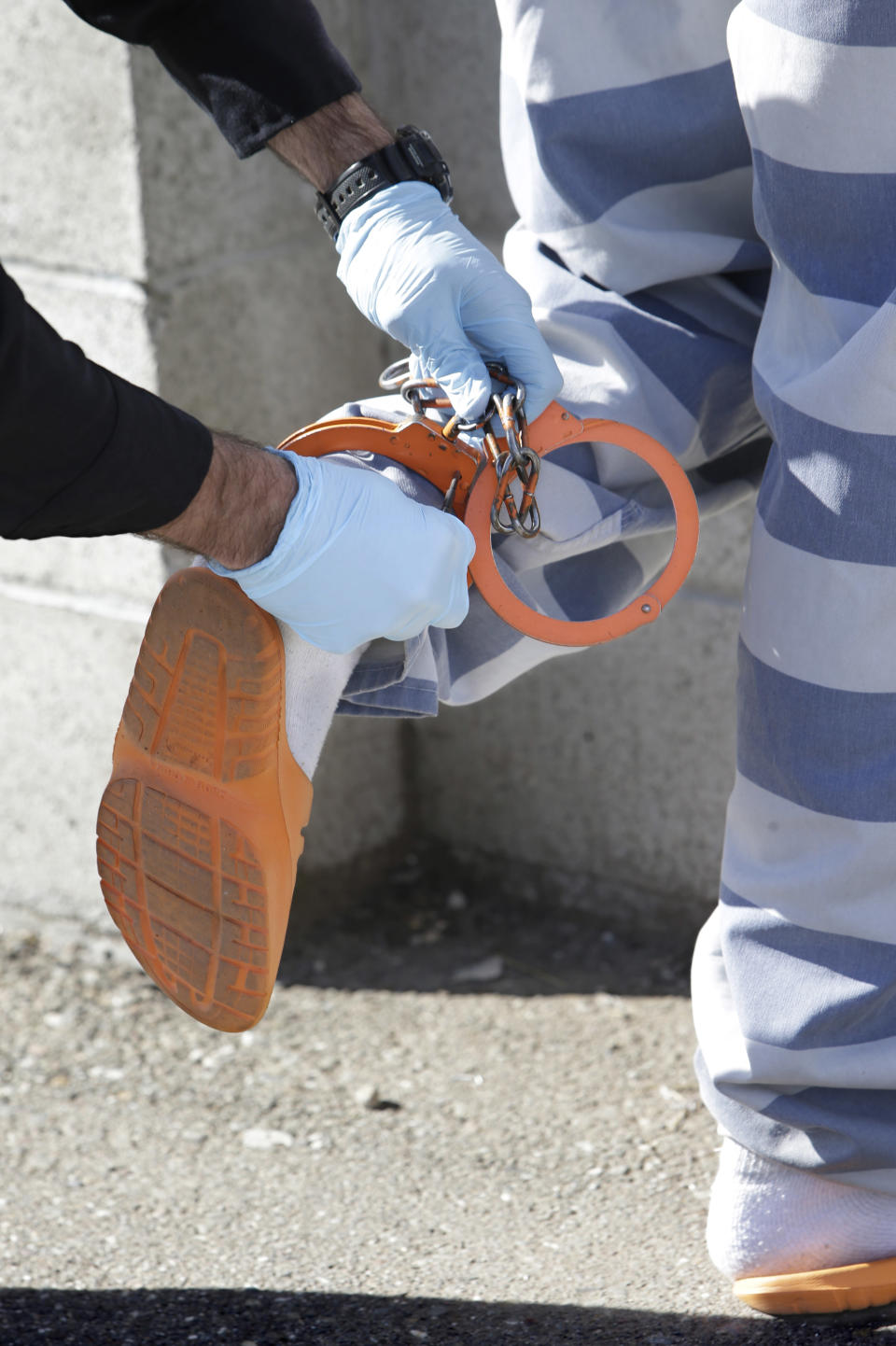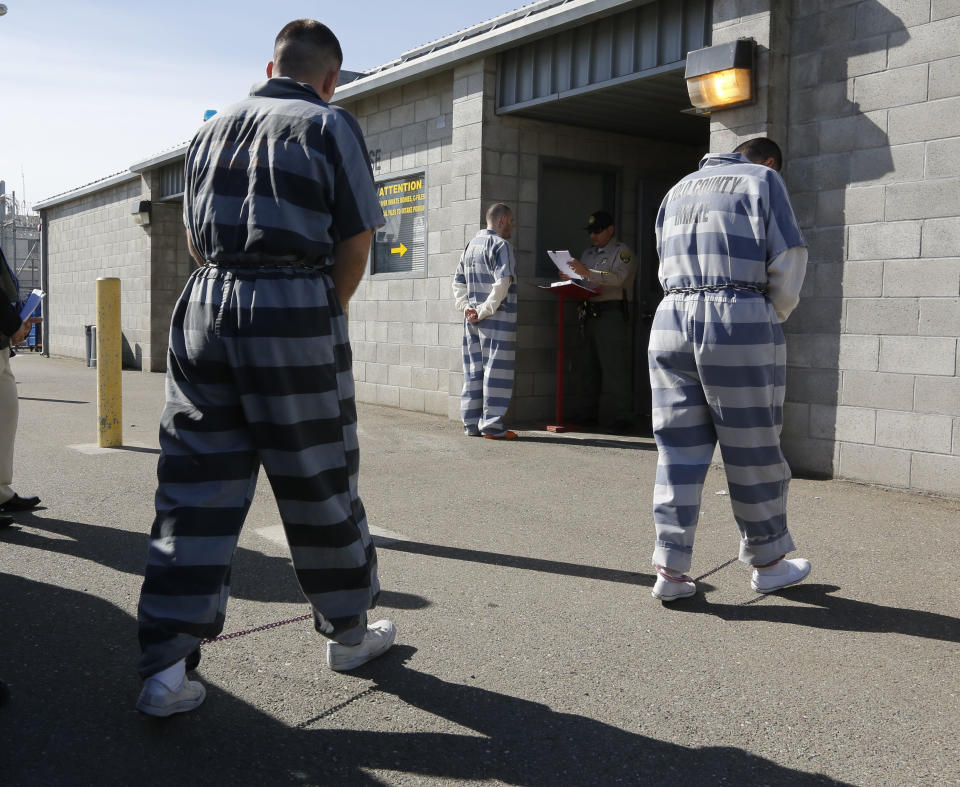AP Exclusive: Counties undermine prison efforts
SACRAMENTO, Calif. (AP) — California counties are confounding the state's court-ordered efforts to sharply reduce its inmate population by sending state prisons far more convicts than anticipated, including a record number of people with second felony convictions.
The surge in offenders requiring state prison sentences is undermining a nearly 3-year-old law pushed by Gov. Jerry Brown. The legislation restructured California's criminal justice system to keep lower-level felons in county jails while reserving state prison cells for serious, violent and sexual offenders.
The law initially reduced the state prison population by 25,000 inmates and brought it close to the level demanded by a special panel of three federal judges who ruled that a reduction in crowding was the best way to improve treatment of inmates.
But the inmate population is rising again, led by a record increase in the number of second felony convictions for those who already had a prior conviction for a serious crime.
Counties, where prosecutors have discretion in filing such charges, sent nearly 5,500 people with second felony convictions to state prisons during the 2013-14 fiscal year, a 33 percent increase over the previous year and the most since California enacted the nation's first three-strikes law in 1994 that required life sentences for offenders convicted of three felonies.
The number climbs to 6,044 two-strike offenders last year if parole violators returned to prison with new second-strike sentences are included, a 20 percent increase.
The trend is complicating the state's mandate to meet a prison population cap by February 2016. Last month, the federal judges reluctantly gave Brown's administration two additional years to comply by taking steps that include earlier releases for some inmates sentenced on a second strike.
Partly as a result of the increase in second-strike offenders, the prison population of 133,000 inmates last June is projected to grow to 143,000 by June 2019, despite all the steps the state is taking to comply with the federal court order and reduce the population to about 112,000 inmates.
State prisons currently hold more than 34,000 second-strikers, about a quarter of the total inmate population.
Second-strike convictions had been generally declining since 1999. They began rising sharply about the same time as the realignment law took effect in October 2011, according to figures from the California Department of Corrections and Rehabilitation that were reviewed by The Associated Press, though there are competing theories on the reasons for the increase.
"We're not quite sure what's behind the trend. When you see such a drastic increase year-over-year ... that kind of suggests that there's been some kind of behavior change at the county level, in terms of how they are charging, whether they are choosing to charge individuals as second-strikers or not," said Aaron Edwards, a corrections analyst with California's nonpartisan Legislative Analyst's Office.
Judges are imposing longer prison sentences for drug, property and other nonviolent crimes since criminal justice realignment became law, according to an analysis by the corrections department. Those sentences are increasing even as the length of sentences for violent crimes declined, leading to a net increase of 3.3 months in the average prison sentence since realignment.
Mark Zahner, chief executive of the California District Attorneys Association, said prosecutors are not to blame. "We're convinced that it's not any kind of change in charging practices on the part of the DA's offices," said Zahner, who said he had spoken with virtually all of the county prosecutors in the state.
Nevertheless, the California Judges Association has asked judges to respond to the increase in second-strike convictions later this spring.
Corrections spokeswoman Deborah Hoffman said the department is examining the trend because it represents the largest jump in the state prison population, but could not say what additional steps the administration is considering.
The two-strikes portion of the law doubles the sentence of a criminal convicted of any felony if they have one prior conviction for a serious or violent felony. It means offenders will be sentenced to state prison and not county jail, and must serve at least 80 percent of their sentence.
The second-strike does not need to be serious or violent to qualify for an extended sentence, and the courts have ruled that prosecutors and judges have discretion in applying the strike law if doing so would impose an unfair sentence given the nature of the crime. Prosecutors also have discretion in charging some crimes as misdemeanors or felonies, with only felonies triggering the second-strike law.
Thirty-eight of California's 58 counties increased the number of second-strikers sent to state prisons in the fiscal year that ended last June, according to the corrections department figures.
Merced County more than tripled the number of second-strikers, from 23 to 79. The number doubled in Placer and San Joaquin counties and climbed 88 percent in Stanislaus County.
The number was up 86 percent in Fresno County, which sent 118 more second-strikers to state prison last fiscal year. That was second only to the 151 additional second-strikers sentenced in Riverside County, although Riverside had only a 34 percent increase because it already had the second-highest number of two-strike offenders going to state prison.
Stanislaus County Assistant District Attorney Carol Shipley blamed the surge in her county on an increase in crime since realignment.
Her office reviewed 8,200 felony cases in 2011 but 11,000 last year, a 25 percent increase over two years. It saw a 14 percent increase in misdemeanor cases.
"That's a huge jump," she said. "People are being released from prison, and they're committing more crimes."
But San Joaquin Public Defender Peter Fox said he thinks there has been "some attitudinal backlash against realignment" by judges and prosecutors.
"Instead of kind of helping the governor to comply with the three-judge court, the attitude has just been, 'Let's keep sending the same number to prison,'" Fox said. "It's a big problem. We've got two more years to meet this deadline. I don't see that happening unless the law is changed."
Policies on applying the law vary widely between counties, said prison consultant James Austin, who has testified on behalf of inmates in several of the lawsuits over California prison conditions. San Francisco, for instance, rarely uses the second- or third-strike provisions that carry extended sentences, even though it has plenty of candidates, while other counties use it whenever they can, he said.
Michael Romano, director of Stanford Law School's Three Strikes Project, said other factors also are likely driving the increase. His group promoted a successful initiative in 2012 that modified what was then the nation's toughest repeat offender law so that only a violent or serious third felony would lead to a life sentence.
Before realignment, he said, ex-convicts who violated their parole could be quickly sent back to state prison without the trouble or expense of filing new criminal charges. Since realignment, most parole violators serve minimal sentences in county jails. If prosecutors think a longer sentence is merited, or want to limit crowding in local jails, they now must file new charges against the parolee.
The projected state inmate population increase "basically doubles the hurdle that the state has to get over," said Rebekah Evenson, an attorney with the nonprofit Prison Law Office, which sued over prison crowding. "They also have to prevent that increase from happening."
